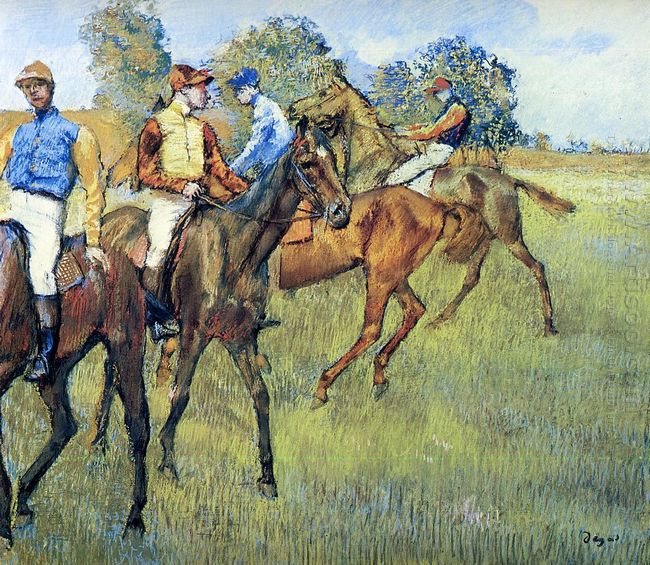This painting showed the instant reality Edgar Degas captured before the formal start of the horses racing and the horse’s gallop. The jockey facing the left was created based on a sketch of Degas in the late 1860. Thus, his creation was not completely in accordance with what he saw, but in accordance with the requirements of the revised paintings. Because the pastel was painted faster than the oil paint and was ready for arbitrary modification, Degas took advantage of this characteristic to paint this genre painting. In this painting, people could see the continuous stack traces of Degas’s pastels, and the experiments of use of color. The painting was very bright and saturated, conveying a rich feeling.
From 1862, Degas began to take an interest in horse racing, which provided relatively complete subject for him. Race Horses by Edgar Degas made between 1877 and 1880 showed the observation methods of Degas had changed. The lines were indistinctly shown and did not damage the color relationship of shading arrangement. The color formed the unified whole. On the whole, highlighting the rider’s body tone was identical with displaying the tone of horizontal houses. From the unification of the visual image, incompleteness of the painting also produced an air sense which could make all the objects freely breathe. Well, the body lacked the dimensional sense, but the space did not show it. However, it was not the defect, because these factors did not affect the completeness of the impression. The figure’s back cut by the painter in the foreground was the painter’s unnecessary creation.

However, these riders were combined to activate the overall color effect. Their coats’ mottled sparkling yellow, rose, red, light blue with green, blue gray and yellow gray in the background were very harmonious. The achievement of this effect was because Degas made the figures immersed in a rendering and easy breathing atmosphere. As you can imagine, he created this painting completely based on his memory not the external light. And what his memory depicted was not the abstract shape, but the specific image of shape and color.